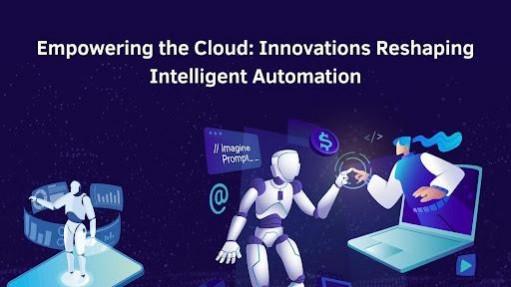
In a world increasingly driven by digital transformation, technological ingenuity continues to redefine operational landscapes. Revanth Reddy Rondla, a pioneer in cloud platform integration and intelligent automation, highlights a new frontier where artificial intelligence and machine learning fundamentally enhance cloud infrastructures. In this article, we explore the cutting-edge innovations that are detailed, mapping a future where adaptability and efficiency are at the core of enterprise operations.
The Evolution of Dynamic Resource Allocation
Dynamic, AI-driven resource allocation is replacing traditional static management. These systems autonomously adjust cloud resources in real time, boosting utilization by 18% and cutting energy use by 25%. Tasks that once required hours now complete in minutes, keeping operations agile, responsive, and cost-efficient in a volatile digital landscape.
Predicting the Future: Smarter Workload Management
Deep learning models now predict cloud workload changes with 89% accuracy, enabling proactive scaling, reducing over-provisioning, and setting a new standard for reliability and cost efficiency in cloud operations.
Infrastructure Intelligence: Real-Time Optimization
Today's cloud infrastructure benefits from comprehensive AI-driven analysis that continuously scans and correlates up to 40 performance indicators. This sophisticated monitoring dramatically reduces false alarms and enhances anomaly detection, slashing manual intervention rates. With real-time decision-making capabilities and microsecond-level response times, infrastructure management transforms from reactive troubleshooting to a dynamic, self-optimizing ecosystem.
Architecting a Responsive Cloud: Self-Adjusting Systems
Modern cloud architectures use self-adjusting systems that autonomously reconfigure networks, optimize workloads, and fine-tune storage, improving resource efficiency by 25% and reducing costs while adapting seamlessly to evolving demands.
Unlocking Real-Time Insights
Rapid data analysis frameworks empower organizations with near-instantaneous insights. Processing streams in under half a second, these AI-driven systems enhance operational awareness, user behavior understanding, and security anomaly detection. The ability to correlate disparate system events with precision accelerates problem resolution and fortifies digital resilience.
Early Detection: Preventing Failures Before They Occur
Perhaps one of the most transformative capabilities is predictive maintenance. Intelligent systems can forecast potential failures with over 80% accuracy several hours before any noticeable service impact. By allowing for timely interventions and even autonomous remediation, organizations experience substantial reductions in incident rates and recovery times, ensuring smoother and more reliable service delivery.
Streamlining Integration: APIs, Pipelines, and Seamless Connectivity
Strategic integration powers intelligent cloud ecosystems through API-driven automation, low-latency pipelines, and event-driven architectures. Standardized protocols and dynamic service discovery further ensure seamless connectivity, minimizing bottlenecks, reducing failures, and enabling resilient, high-performance cloud operations with efficient, error-free service communication.
Scaling Beyond Limits with Edge-Cloud Synergy
Innovations in intelligent automation extend scalability by leveraging edge computing. By processing up to 40% of workloads locally, organizations reduce latency and central load, enabling real-time responsiveness and system resilience. Distributed, containerized microservices dynamically adjust scaling needs autonomously, preparing organizations to handle growing data volumes and unpredictable surges effortlessly.
High-Performance Computing and Operational Fortitude
Strategic workload distribution across edge, fog, and cloud layers boosts computational efficiency, reducing processing times and enhancing performance stability. Self-healing, distributed architectures further strengthen resilience, enabling enterprises to sustain high service levels during demand surges or system disruptions.
Looking Ahead: Self-Optimizing, Autonomous Cloud Ecosystems
The future promises even greater leaps, with research focusing on self-optimizing systems that autonomously reposition workloads for peak efficiency. Lightweight containerization tailored for edge environments and unified management interfaces further simplify operational control. As organizations adopt these innovations, cloud ecosystems will not just respond to needs but anticipate and evolve with them, achieving new benchmarks of efficiency and strategic agility.
In conclusion, Revanth Reddy Rondla's insights reveal a cloud future driven by intelligent, predictive, and autonomous systems. His vision marks the shift toward infrastructures that are not only robust but remarkably self-sufficient, enabling enterprises to achieve unparalleled operational excellence in a rapidly transforming digital world.

















